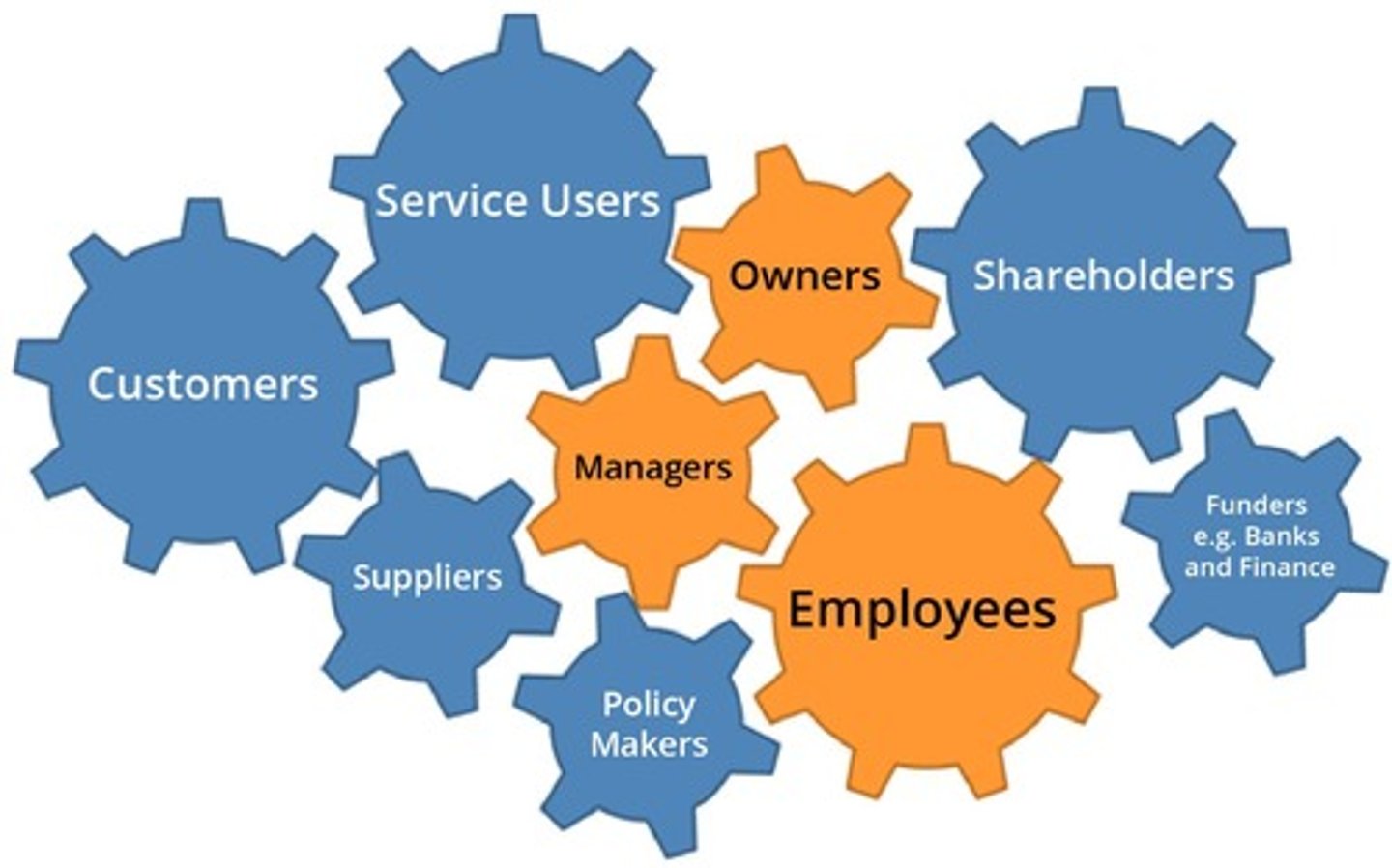Understanding Business Structures and Their Impacts
1/309
There's no tags or description
Looks like no tags are added yet.
Name | Mastery | Learn | Test | Matching | Spaced |
|---|
No study sessions yet.
310 Terms
Business Structure
Legal framework defining ownership and operations.
Private Sector
Owned by individuals or groups, not government.
Public Sector
Owned and controlled by the government.
Sole Trader
Individual owner running their own business.
Partnership
Business owned by two or more individuals.
Private Limited Company
Company owned by private shareholders, limited liability.
Public Limited Company
Company offering shares to the public, limited liability.
Unlimited Liability
Owners responsible for all business debts personally.
Limited Liability
Owners' financial responsibility limited to their investment.
Not-for-Profit Organisation
Entity focused on social goals, not profit.
Social Enterprise
Business aiming for social impact alongside profit.
Charity
Non-profit organization helping those in need.
Co-operative
Business owned and operated by a group for mutual benefit.
Merit Good
Service beneficial to society, underprovided by market.
Public Services
Essential services provided for the good of society.
Business Objectives
Goals such as profit, growth, and survival.

Profit
Revenue exceeding total costs; Profit = SR - TC.
Growth
Increase in size or sales volume of a business.
Survival
Continuing to operate, especially for startups.
Essential Services
Services like education and healthcare provided by public sector.
Stakeholders
Individuals or groups affected by business operations.

Evaluation of Structures
Assessing advantages and disadvantages of business forms.
Profits
Earnings remaining after all expenses are deducted.
Debt
Money owed by a business to creditors.
Sole Trader
Individual running a business alone, bearing all risks.
Unlimited Liability
Personal responsibility for all business debts.
Self Assessment Tax Return
Annual tax declaration to HMRC by individuals.
Assets
Resources owned by a business with economic value.
Income Tax
Tax levied on profits of sole traders.
Motivation
High drive for success in sole traders.
Partnership
Business arrangement between two or more individuals.
Sleeping Partner
Investor in a partnership without active management.
Limited Companies
Separate legal entities from their owners.
Shareholders
Owners of a limited company holding shares.
Limited Liability
Protection from being responsible for company debts.
Incorporation
Process of registering a company as a legal entity.
Memorandum of Association
Document stating company name and purpose.
Articles of Association
Rules governing the management of a company.
Form 10
Details of directors and company secretary submitted.
Form 12
Declaration of compliance with company law.
Private Limited Companies
Companies with limited share transferability, owned by known shareholders.
Public Limited Companies
Companies that can sell shares publicly on stock exchanges.
Financial Records
Documents detailing a company's financial transactions.
Annual Return
Yearly report submitted to Companies House detailing company information.
Public Limited Company
Company selling shares publicly on stock exchange.
Private Limited Company
Company shares not available to the public.
Limited Liability
Owners' personal assets protected from business debts.
Separate Legal Identity
Company distinct from its owners legally.
Hostile Takeover
Acquisition of company against management's wishes.
Financial Privacy
Limited disclosure of financial records to public.
Shareholder Voting Rights
Shareholders can influence company decisions.
Social Enterprise
Business prioritizing social objectives over profit.
Charity
Organization supporting specific societal causes.
Society
Group with common interests, formal or informal.
Cooperative
Member-owned organization for mutual benefit.
Administrative Costs
Ongoing expenses related to company management.
Capital Raising
Process of obtaining funds for business activities.
Legal Requirements
Regulations governing company formation and operation.
Public Scrutiny
Increased public examination of company operations.
Nature of Business
Type of business influencing legal structure choice.
Equity Sharing
Distribution of ownership among partners or shareholders.
Surplus Reinvestment
Profits reinvested for social objectives, not shareholders.
Registered Charity
Charity recognized by government for tax benefits.
Cultural Society
Group focused on cultural interests or activities.
Political Society
Group organized around political interests or goals.
Research Funding
Financial support for scientific or social research.
Legal Structure
Framework defining business ownership and liability.
Stakeholders
Individuals or groups affected by business decisions.
Private Sector
Businesses owned by individuals or groups.
Public Sector
Government-run services for public benefit.
Public Goods
Goods not provided in a free market.
Non-rivalry
One person's use doesn't reduce availability for others.
Non-excludability
Cannot prevent others from benefiting from use.
Merit Goods
Under-consumed goods that require government provision.
Survival
Primary aim for businesses to continue operating.
Profit Maximisation
Goal to achieve highest possible profit.
Market Share
Percentage of total sales in a market.
Public Sector Aims
Provide universal services regardless of location.
Private Sector Aims
Focus on profit, growth, and market share.
Unlimited Liability
Owners responsible for all business debts.
Limited Liability
Owners' financial responsibility limited to investment.
Sole Trader
Individual running a business alone.
Private Limited Company
Ownership restricted to shareholders, limited liability.
Public Limited Company
Shares traded publicly, limited liability.
Not-for-Profit Organisations
Entities focused on social goals, not profit.
Consumer Goods
Products used directly by consumers.
Producer Goods
Items used to produce other goods.
Durable Goods
Items used repeatedly over time.
Single Use Goods
Items intended for one-time use.
Trading Surplus
Excess of revenue over expenses in trading.
Merit Goods
Goods provided to improve society's living standards.
Public Sector Importance
Ensures provision of essential public goods.
Public Goods
Services available to all without direct payment.
Sole Trader
Business owned and operated by one individual.
Partnership
Business owned by 2-20 individuals.
Financial Reward
Opportunity to earn more than current employment.
Deed of Partnership
Legal agreement outlining partners' rights and responsibilities.
Capital Contribution
Amount each partner invests in the business.
Profit Sharing
Distribution of profits among business partners.
Independence in Business
Control over decisions and operations of the business.